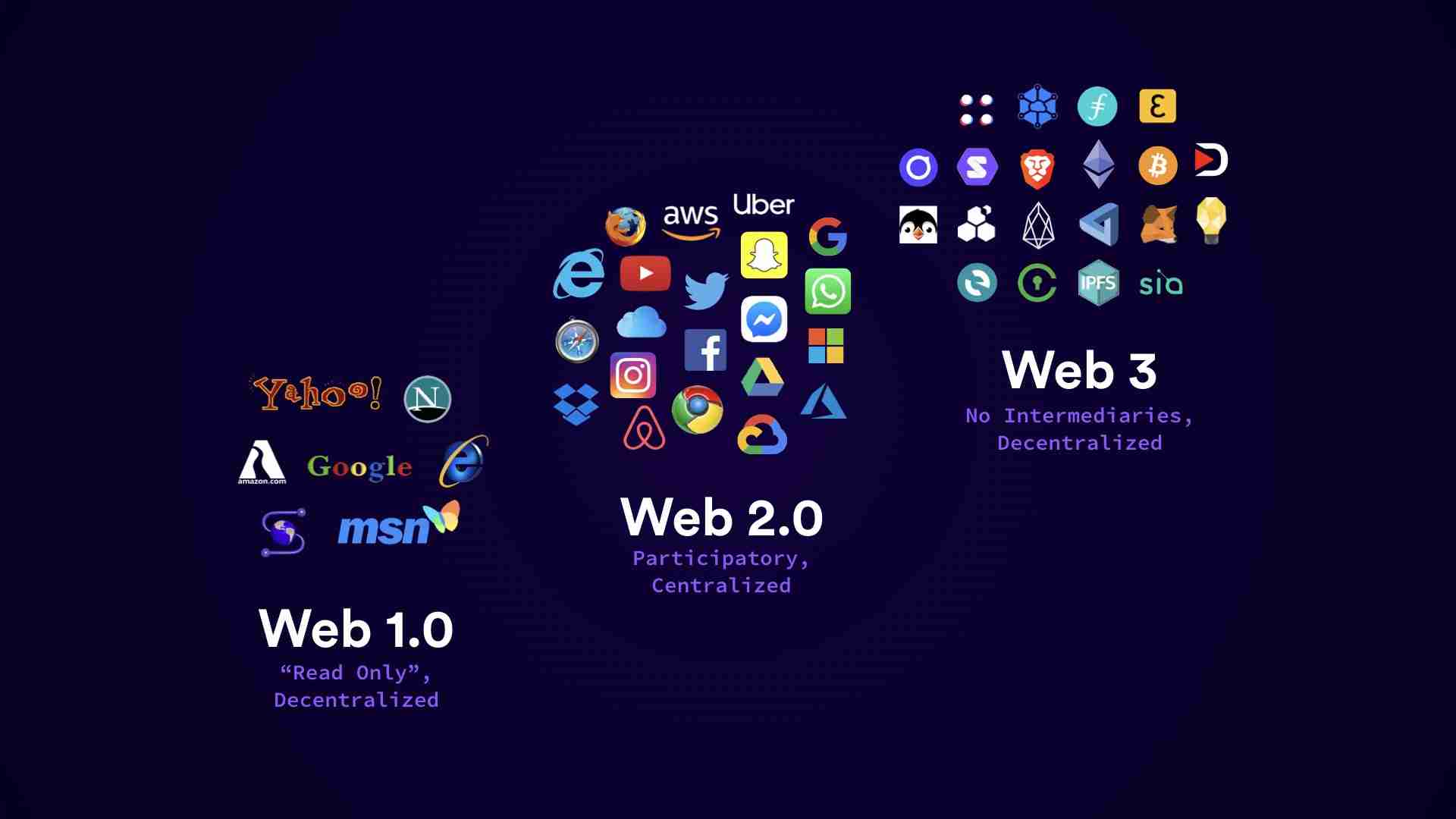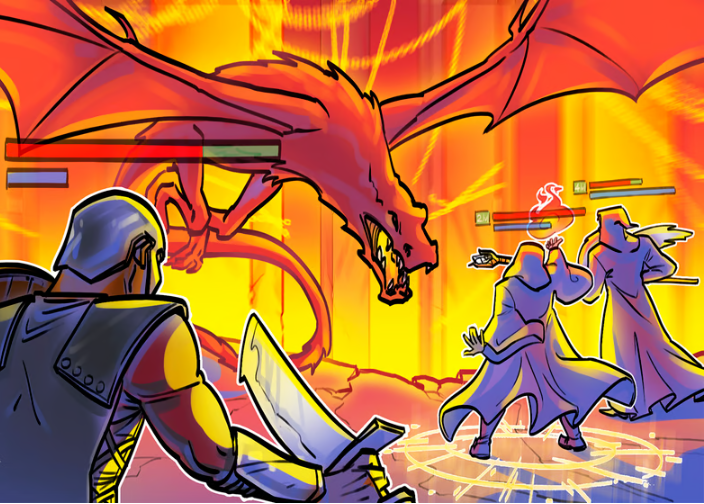From the earliest form of the internet Web1.0, which is a web of static information that links to each other though URLs also known as the “read-only Web”, the internet moved to Web2.0 also known as the “participative social Web”, which is basically a Web of social interactions linking users to each other.
This consists of social media sites like Twitter, WhatsApp etc. where algorithm-based data feed is being shared and consumed by users. Just like Web2.0 evolved out of Web1.0, the internet has evolved to Web3.0.
Web3.0 is regarded as the “read, write, execute Web” where users are introduced to decentralized platforms. Web3, also known as the semantic web, is a web of decentralized information connected within a public ledger.
Information and transactions are dully exchanged with no central authority thus promoting transparency. It is a more innovative model of the internet that is built on the client-server architecture aimed at providing a decentralized, trustless and permissionless transaction between users where users need only to trust the network and not the network users.
Unlike in Web2.0 where big tech firms like Goggle or Amazon host servers that grant them access to user’s data, where in most cases they monetize data in exchange for their services, Web3 offers a more decentralized platform that gives user’s distributed ownership and total control over their data.
Proportionately to the rise in popularity of blockchain technology, Web3 is presently gathering up massive steam as the internet’s latest generation. Web3 disbands the concept of a server or client owning to the fact that it involves peer-to-peer file sharing which is made possible by the Interplanetary File System (IPFS).
Web2 operates in such a way that users generate contents on social platforms like Instagram, Twitter, YouTube etc. and despite this, user’s do not own any of these contents.
Web2 runs on a centralized model where the server providers can decide to take down a user’s account because he posted something they are against. Web3 on the other hand gives user’s control and ownership over their contents and data.
Can Web3 Solve the Problems of Web2?
In Web3, end-users get introduced to features that are absent in Web2 like a permissionless internet, ownership of their data and encryption security, the removal of intermediaries, elimination of unfair censorship or removal of account, recognizes content creators, etc.
With several beneficial features of Web3, crypto investors, internet users, business and firms can tap into the mouthwatering potentials. Web3 aims to address the challenges of Web2 by bringing in the buzzword “decentralization”.
Data Ownership
Web 3.0 offers a complete restoration of ownership and control of personal data to end-users, eliminating the need for Big Tech intermediaries. End-users get to decide what happens with the data they generate all thanks to decentralization.
The vulnerability expressed in Web2 where users exchange their data for accounts (like Instagram account, Facebook profile) which can be easily disabled by the centralized entities is being addressed with Web3’s introduction of a self-sovereign identity and the storage of data on the blockchain rather than on large centralized servers with thousands of globally distributed nodes, thus providing a user-centric model of the internet.
Decentralized platforms have a higher security fence when compared to Web2 although several Web2 apps have moved to multi-cloud hosting.
Data Security
Web2 is more prone to cyber attacks and security breaches because of its centralized system. Any attack at the center disrupts the entire system making web2 more vulnerable.
Also due to the fact that these centralized powers have access to user’s personal data, they sometimes give away this information to malicious attackers.
Web3 has a leverage because it uses a decentralized model making it resistant to such scenarios. Decentralization improves the security level of user’s data. Web3 relies on “cryptography”, especially hashing in a bid to secure data, ensuring it is neither altered, replaced or removed without the consent of the supporting network.
Users do not need to trust a centralized system because they can be vulnerable but rather to trust the blockchain which requires a wide-ranging consent before any change is being carried out.
Unfair Censorship
In centralized systems like the Web2 social media, Tech companies freely censor or even close down accounts of users that they feel threatened with what they uphold.
Users do not have adequate freedom to express themselves without being cautious of censorship. Twitter for example can censor any tweet at any given time without the permission of the user.
In a decentralized social platform, censorship will be quite difficult even for users with hateful intent. Web3 presents a system where users will take part in the decision and governance of the project by casting votes instead of a single authority calling all the shots just like in Web2.
Users will get to have privacy, control, and freedom to post their intents without the fear of being censored or have their accounts deleted.
Financial Freedom
Web3 efficiently boosts financial freedom through the support of several different technologies. Every user or participant in Web3 is a stakeholder which goes on to mean that they freely engage in financial operations, take for an example in DeFi, where users can freely autonomously participate in financial activities.
Upon the integrating of “Know Your Customer (KYC)” and “Anti-Money Laundering (AML)” into DeFi, its popularity, accessibility and usage has skyrocketed.
Whereas payments in Web2 are made using fiat currencies, Web3 offers payments through cryptocurrencies and also fiat payment model in some cases.
Transparency
Transparency is inherently a feature of decentralized ecosystems because of the collaboration between nodes to ensure a seamless operation.
Due to the fact that no node may act independently and the active participation of users in the government’s decision-making through voting, transparency is guaranteed as no single entity or central authority controls the process just like in Web2.
Web3 is now considered a powerful tool against malicious activities, as transactions within the system are virtually irrevocable and traceable hence the inability to make database modifications or changes after a transaction.
Automation
Through the use of smart contracts, Web3 systems run without constant human contribution. The code reflects the contract between various parties involved, performing irreversible transactions.
With smart contracts, there is an evident reduction of operational expenses, the issue regarding prejudice is being addressed, and enhancement of security in transactions.
By auditing the smart contract codes using a combination of manual and automated tools, developers will be able to tightly secure its system against security defects and vulnerabilities.
We can see an example of a Web3 illustration of accelerating automation with Zokyo, a blockchain security protocol which specializes as an end-to-end security resource for blockchain-based projects.
Creator Economy
Web3 combines blockchain technology with other decentralized tools in order to aid creators have the control they require over their creations. This feature allows users to have adequate control on the distribution and monetization of their works rather than how it works on Web2.
Basically, creators acquire freedom and autonomy, as they engage peer-to-peer with the consumers, eliminating the need for a middle-man and efficiently granting creators and users full control to handle their creations, identity and data thereby ensuring a clear and seamless financial transaction.
In Web3, individuals and not the platforms keep the majority of profits while the platforms may earn little revenue.
NFTs are fundamental in the creator economy of Web3 as they are based on the principle of digital scarcity which can invariably increase the value of the product thereby causing a greater revenue generation for the creators devoid of platforms that can suck it all up.
NFTs are justly executing their purpose as they provide an avenue for creators to turn their community members into investors by allocating them with reasonable value out of the interaction. Users do not necessarily need to have the technical knowledge or coding skills in order to build an NFT-based/ creator economy.

How Web3 Resolves Interoperability Issues
One of the greatest challenges the crypto space has or is facing is the inability to interoperate. Frictionless data transmission and communication across Web2 and Web3 projects is being fostered by a vital element of the computer system known as “interoperability” which is sometimes referred to as “cross interaction”.
Web3 interoperability allows users to access a multitude of obtainable applications across diverse chains without having to exit the decentralized space. Because blockchains work in isolation, solutions like sidechains are needed to create a bridge between chains.
Sidechain technology can enhance scalability as they each work on using their individual validators. The mainchain is left intact when transactions are going within the ecosystem thereby applying less pressure on it.
With this, users are granted freedom of flexibility while the security that is expected of blockchain technology is preserved. Examples of sidechains are Polygon PoS, Horizon blockchain etc.
Web3 interoperability comes with enhanced functionality which infers a smooth, seamless navigation across projects. It is also on record that Web3 interoperability increases scalability keeping the whole system fast and efficient.
Users can easily glide from one application or platform to another without running into challenges. The effective operation of applications also depends on intra-Web3 communication.
By bringing in a sense of simplicity, Web3 interoperability drives to make blockchain more accessible by giving users a holistic and easy-to-use space for an uninhibited activity. It is essential that any project that has to be interoperable must be compatible with Ethereum Virtual Machine (EVM) due to the Ethereum blockchain that is hosting several DApps in Web3.
What are the Challenges with Web3?
Web3 technology and its decentralized Apps face several challenges just like every other technology. Although Web3 is considered decentralized, developers need to merge Web3 applications with Web2 protocols in order for them to run. Following this, DApps now depend on a centralized infrastructure to function.
A major challenge facing Web3 is the lack of regulatory clarity. Given that blockchain technology is relatively evolving quickly, authorities might take some time to keep up with the unfolding events and due to the lack of control from people in authority, some projects have been involved in unethical events, for example, the FTX scandal.
Another challenge is what is being referred to as “rug pull”. This occurs when a developer intentionally leaves a window in the code open, utilizing it afterwards to steal cryptocurrency funds.
Within the crypto ecosystem, participants are always on the lookout for when someone will penetrate their barriers.
Web3 has devised safety defences just like how Web2 rolled up safety measures which include, proper research before investing, safeguarding your log-in details, and being careful while browsing.
Web3 has also mounted several safety precautions which could help users to save revenue like, avoiding rug pull, evaluating open-source code before the transaction, and having wallets that inform users when the contracts they are interacting with are threatening.









